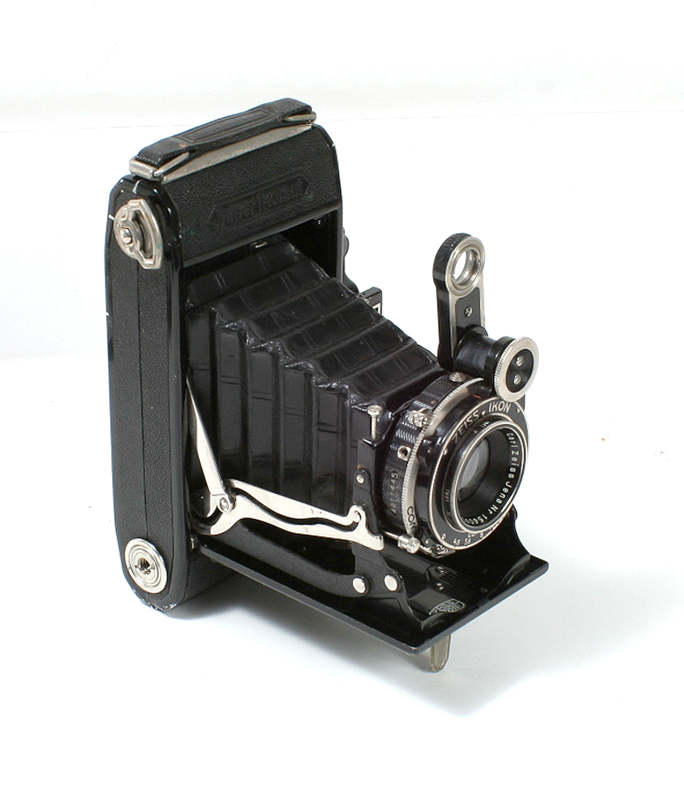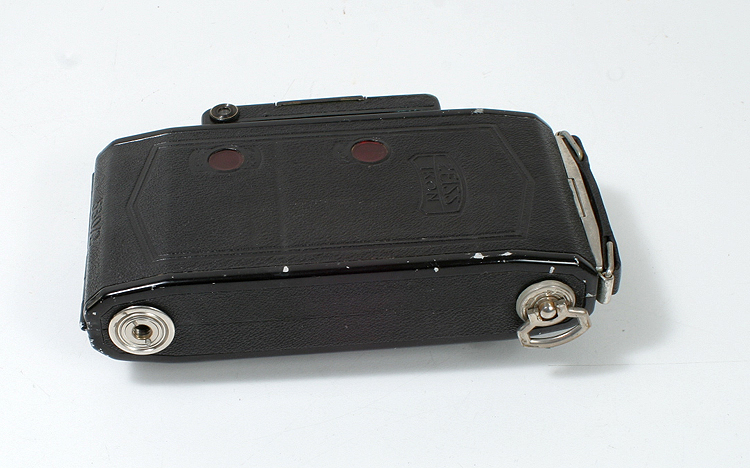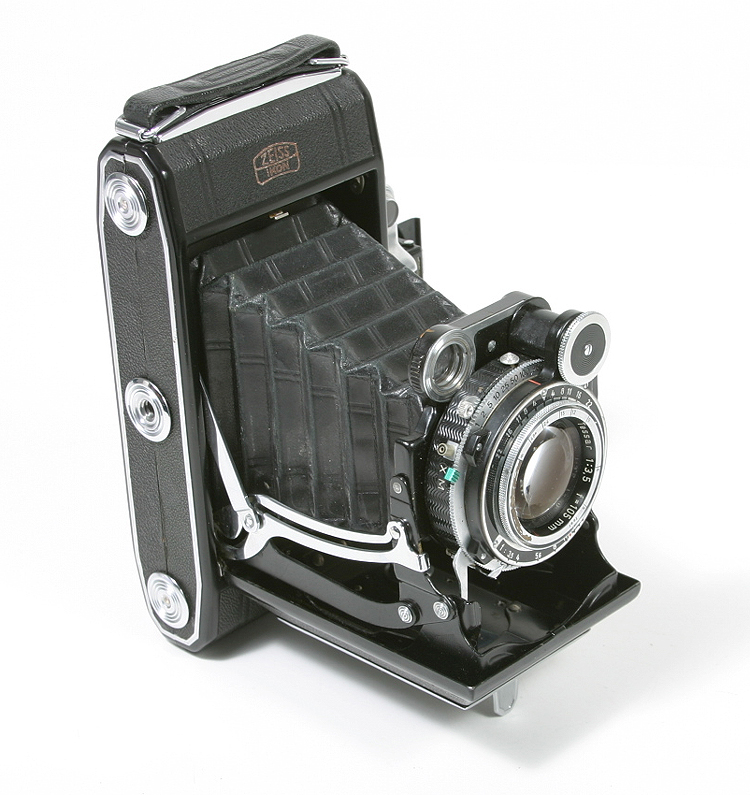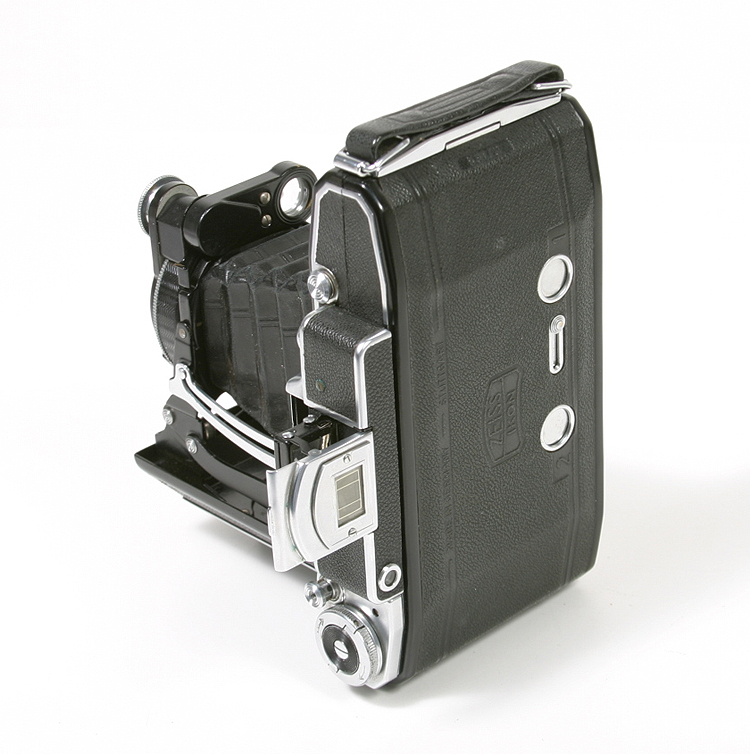
Photographica Pages
An online guide to collectable cameras and related stuff
Zeiss Ikon Super Ikonta C
The history of the Super Ikonta C parallels that of the Super Ikonta A and D. It was brought out in
1934, along with it's smaller brother, the Super Ikonta A, and it's larger brother, the Super Ikonta D in
1934. Designed to take 8 exposures 6 x 9cm on 120 film, it was a reasonably compact camera capable
of creating very high quality images.
The first model of Super Ikonta C was the 530/2. It can be found with a 105/3.8 or 105/4.5 Tessar in
Compur or Compur Rapid shutter, or the lesser 120/4.5 Triotar in Klio shutter. All versions of the Super
Ikonta C have a rotating wedge rangefinder with the rangefinder wedge located on an arm attached on
a pivot to the lens board. The arm folds for storage. The lenses are uncoated, and the camera lacks a
body release, double exposure prevention and flash synch.
In 1937 the model number is changed to 531/2. The camera now has a body release which has double
exposure prevention. The finder is now an Albada finder. Lenses are usually 105/3.8 Tessar until 1938,
then 105/3.5 and 4.5 Tessar lenses. A very few were sold with 106/3.5 Zeiss-Opton Tessar lenses.
Postwar cameras have coated lenses. Some cameras have a second set of ruby windows to allow for
taking 16 exposures 4.5 x 6cm with a film plane mask.
About 1950 the finish of the top plate was changed to satin chrome. Flash synch was available on the
Compur-Rapid, X synch until 1952, then MX synch. The latest version has the Synchro Compur shutter.
The camera was discontinued in 1955.

The Super Ikonta C 530/2.



The Super Ikonta C 531/2.



The 4.5x6cm mask for Super Ikonta C 531/2.

The Super Ikonta C 530/2.



The Super Ikonta C 531/2.



The 4.5x6cm mask for Super Ikonta C 531/2.
